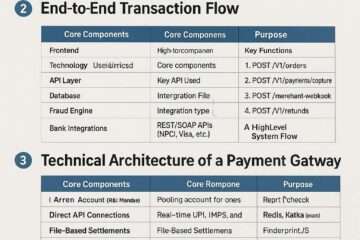
Introduction
On April 2, 2025, the United States, under President Trump’s “Fair and Reciprocal Plan,” imposed a 26% tariff on all Indian imports. This move, aimed at addressing trade imbalances, could deal a severe blow to India’s export-driven economy. With the U.S. being India’s second-largest trading partner, absorbing $85-90 billion in goods annually, the tariff threatens key industries, jobs, and economic growth. This article explores the potential damage to India’s economy and offers practical measures the Indian government can adopt to combat these U.S. tariffs.
How the 26% U.S. Tariff Hurts India’s Economy
- Decline in Export Revenue
The U.S. accounts for nearly 20% of India’s exports, including pharmaceuticals, textiles, and jewelry. A 26% tariff will raise prices for American buyers, reducing demand and potentially costing India $25-35 billion in annual export revenue—a significant hit to its $450 billion export target for FY 2025-26. - Job Losses in Key Sectors
Industries like textiles (45 million jobs) and gems (5 million jobs) rely heavily on U.S. markets. A drop in orders could lead to widespread layoffs, especially among small and medium enterprises (SMEs) and rural artisans. - Pressure on the Rupee and Inflation
Reduced dollar inflows from exports may weaken the Indian rupee, increasing the cost of imports like oil (80% of India’s supply is imported). This could fuel inflation, eroding consumer purchasing power and straining household budgets. - Disruption to Supply Chains
Indian firms integrated into U.S. supply chains—think auto parts and IT hardware—may lose contracts as American companies seek cheaper alternatives, disrupting production and investment. - Economic Slowdown
Exports contribute 20% to India’s GDP. A 1-2% GDP growth reduction due to this tariff could derail India’s ambition to remain the world’s fastest-growing major economy.
Measures the Indian Government Can Take to Combat U.S. Tariffs
The Indian government must act swiftly to mitigate the fallout from the 26% U.S. tariff. Here are five actionable strategies:
- Negotiate Trade Concessions with the U.S.
- Action: Leverage India’s strategic importance as a U.S. ally in the Indo-Pacific to negotiate tariff exemptions or reductions.
- How: Offer market access in sectors like agriculture or ease intellectual property restrictions—key U.S. demands—in exchange for lower tariffs on Indian goods.
- Impact: Restoring competitiveness for pharmaceuticals and textiles in the U.S. market.
- Diversify Export Markets
- Action: Accelerate trade agreements with the EU, ASEAN, and African nations to redirect exports.
- How: Fast-track the India-EU Free Trade Agreement (FTA) and promote “Make in India” products in emerging markets like Nigeria and Indonesia.
- Impact: Offset U.S. losses by tapping into the EU’s $15 trillion economy and ASEAN’s growing consumer base.
- Subsidize Affected Industries
- Action: Provide financial support to export-oriented SMEs and farmers hit by the tariff.
- How: Offer tax breaks, low-interest loans, and export incentives under schemes like the Production Linked Incentive (PLI).
- Impact: Prevent job losses and maintain production capacity in textiles, jewelry, and agriculture.
- Boost Domestic Consumption
- Action: Stimulate internal demand to absorb goods originally destined for the U.S.
- How: Reduce GST rates on key items like apparel and pharmaceuticals, and launch campaigns to promote “Vocal for Local.”
- Impact: Cushion export declines by leveraging India’s 1.4 billion-strong consumer market.
- Strategic Retaliation with Counter-Tariffs
- Action: Impose targeted tariffs on U.S. imports like almonds, apples, and tech products.
- How: Calibrate tariffs to pressure U.S. exporters without escalating into a full trade war, while encouraging domestic alternatives.
- Impact: Signal resolve and push the U.S. to reconsider its stance, while boosting local industries.
Long-Term Strategies for Resilience
Beyond immediate measures, India should:
- Invest in R&D: Enhance product quality to compete globally despite tariffs.
- Strengthen Regional Trade: Deepen ties with Japan, South Korea, and Australia via the Quad framework.
- Build Export Infrastructure: Upgrade ports and logistics to reduce costs and improve efficiency.
Conclusion
The U.S.’s 26% tariff on Indian imports poses a serious threat to India’s economy, risking billions in revenue, millions of jobs, and overall growth. However, with a mix of diplomatic negotiations, market diversification, and domestic support, the Indian government can mitigate the damage and emerge stronger. By acting decisively, India can turn this challenge into an opportunity to build a more resilient, self-reliant economy.





























































